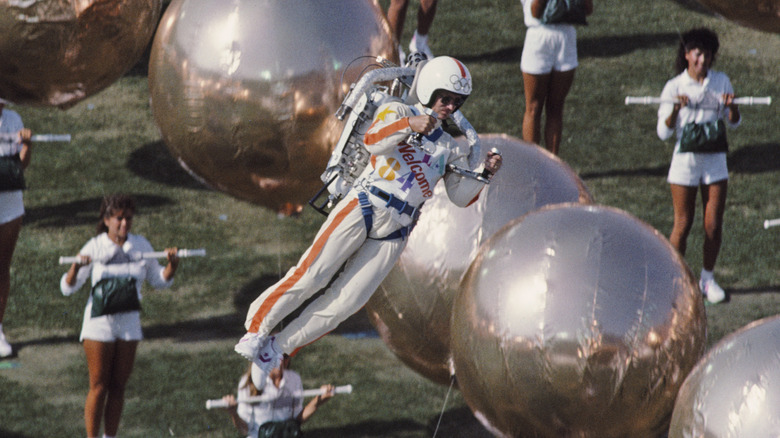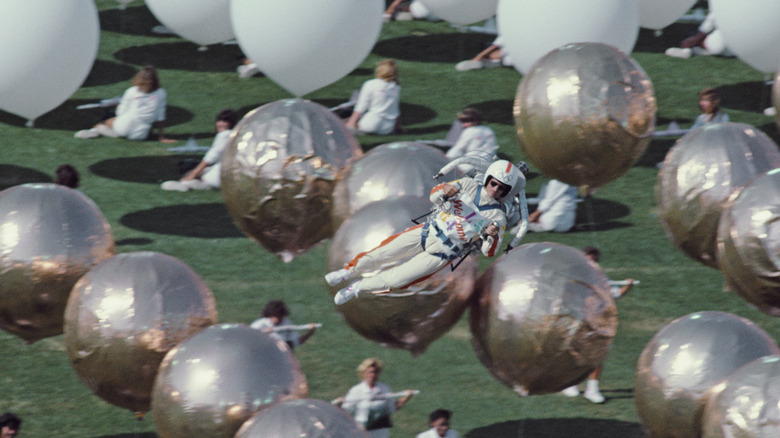The First Super Bowl Had A Jetpack. Here's What You Need To Know
The football game is just part of the Super Bowl extravaganza. Nestled halfway between the yearly battle for pigskin supremacy lies a 13-minute show that costs millions — even though the celebrity performer dances and sings for free. Plus, the high-profile performance requires months of strategizing and thousands of workers to execute, according to Reuters.
The 2020 spectacular, featuring Jennifer Lopez and Shakira, cost a whopping $13 million. "There are so many aspects of it, the dancers, the lighting elements, the special effects," said Dan Parise, a producer with Roc Nation (who coordinated the effort with the National Football League) to the news wire. "It's like a big jigsaw puzzle."
When the Weeknd showcased his talents in 2021, he even spent $7 million of his own money to ensure the pyrotechnics wowed. "We've been really focusing on dialing in on the fans at home and making performances a cinematic experience, and we want to do that with the Super Bowl," Fox News quoted the singer speaking to Billboard.
The first Super Bowl on January 15, 1967, pitting the Green Bay Packers (who won) against the Kansas City Chiefs offered a different type of entertainment. The tournament — then called the AFL-NFL World Championship Game — pepped up the crowd with Gambling College and University of Arizona's marching bands, 10,000 balloons, a 200-singer chorus, 300 pigeons, and a human rocket. That's right, the show introduced space-age phenomena — in the form of 22-year-old Bill Suitor (via The Washington Post).
How to become a rocket man
Wendell Moore, a friend of the Suitor family, invented the rocket belt for Bell Aerosystems and needed an untrained pilot about Suitor's age to test the device, according to The Washington Post. Suitor signed up and took to the skies more than 1000 times — including his football excursion. Suitor enthralled the crowd of 62,000 during the Super Bowl halftime show as he flew across the field to meet another flier, Robert Courter, as both men were propelled by jetpacks. The device — then called a rocket belt — used three tanks (two with hydrogen peroxide and one with pressurized liquid nitrogen) latched onto their backs to thrust them into the air for about 20 seconds.
Suitor's flight, especially, made history. "His nickname was 'Mr. Jetpack,' which gives you an idea of his place in that universe," Mac Montandon, author of the 2008 book "Jetpack Dreams," told The Washington Post. "He's probably the most famous jetpack pilot of all time."
Suitor revisited his jetpack days in James Bond movies, TV beer ads, during the 1984 Los Angeles Olympics (see photo above) and at the Super Bowl XIX 1985 pregame show, Smithsonian magazine reported. Suitor even wrote a 2009 book about his experience, "The Rocketbelt Pilot's Manual."
"The end of the decade was sort of peak interest where the technology was becoming much more real: This stuff that only existed in science fiction stories was starting to exist in the real world," Montandon told the Washington Post.

